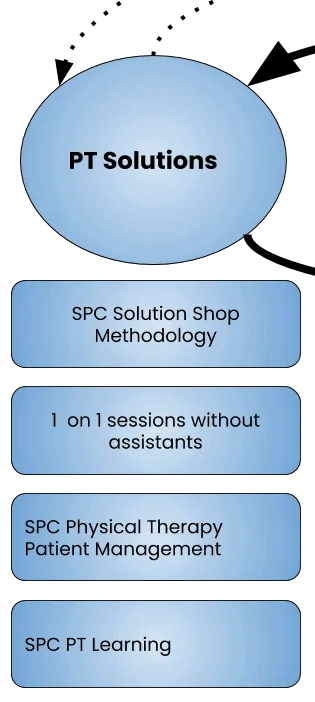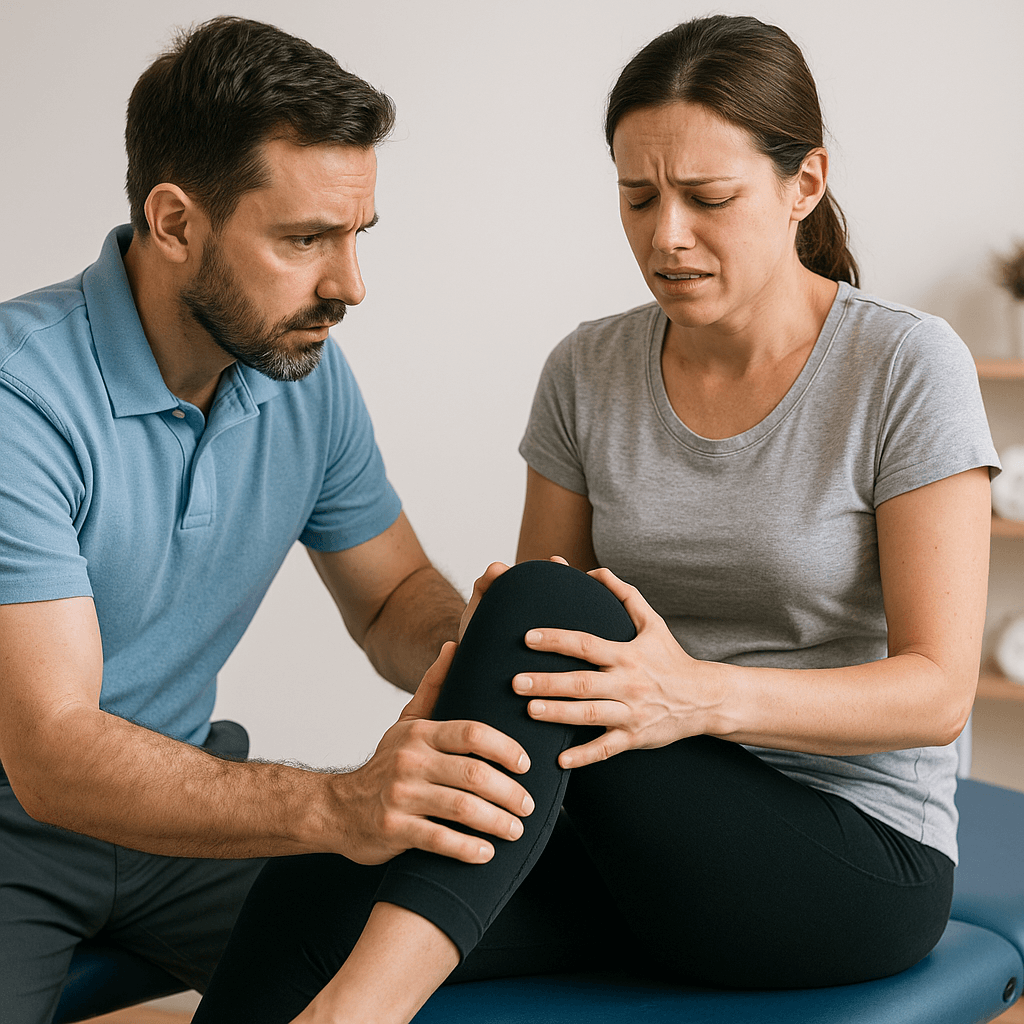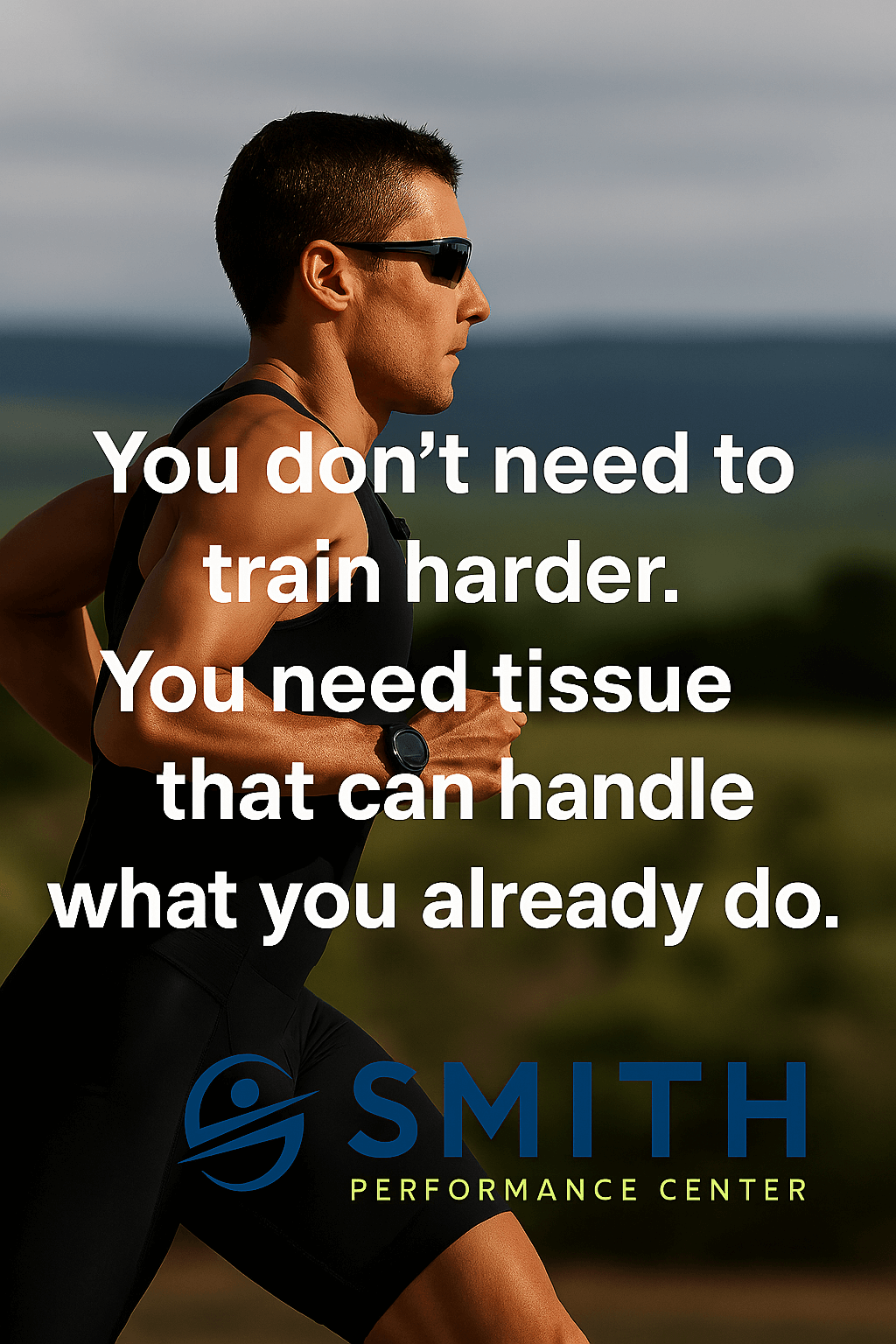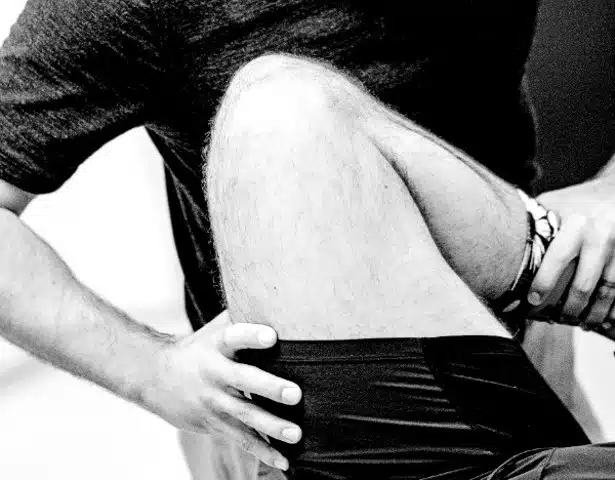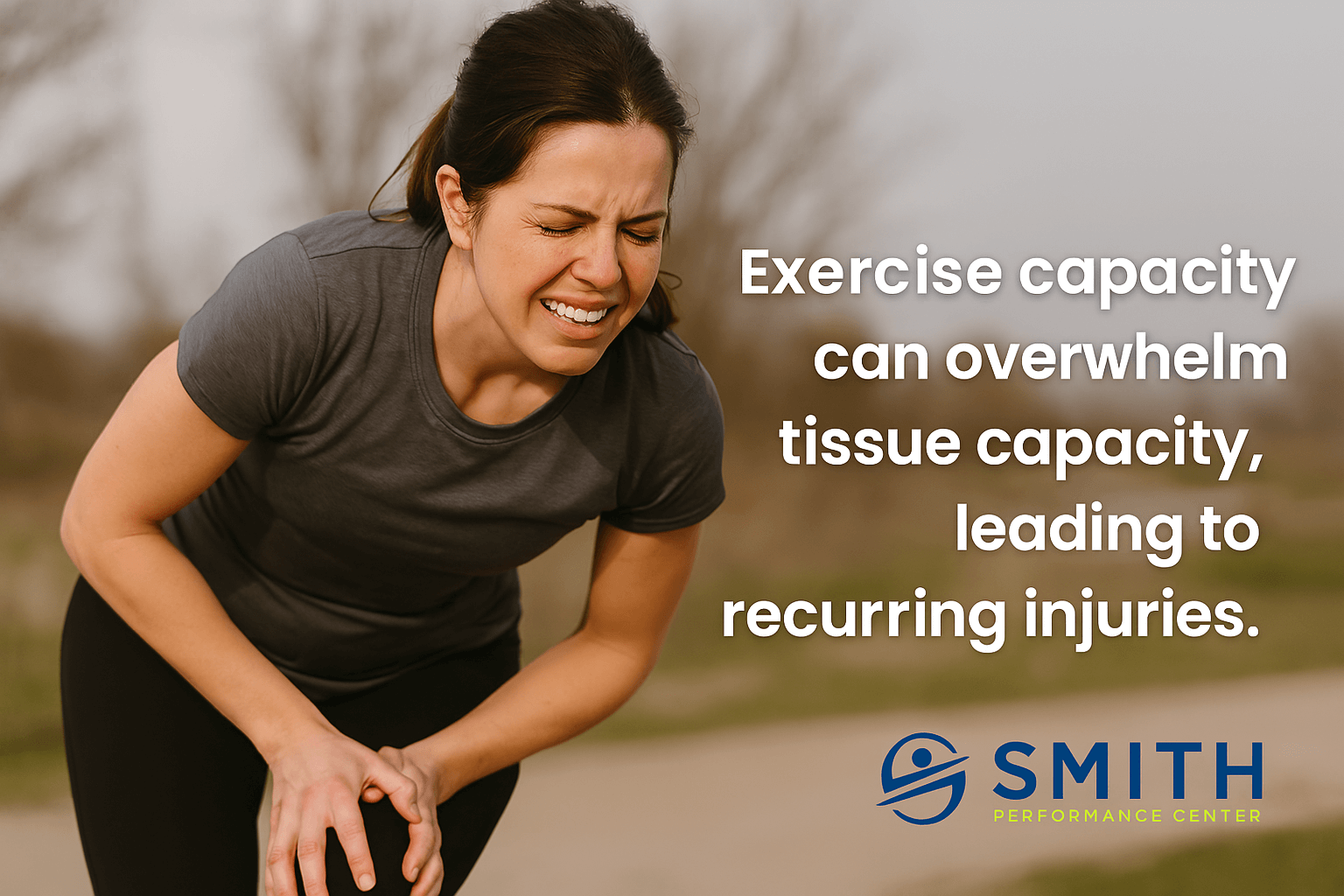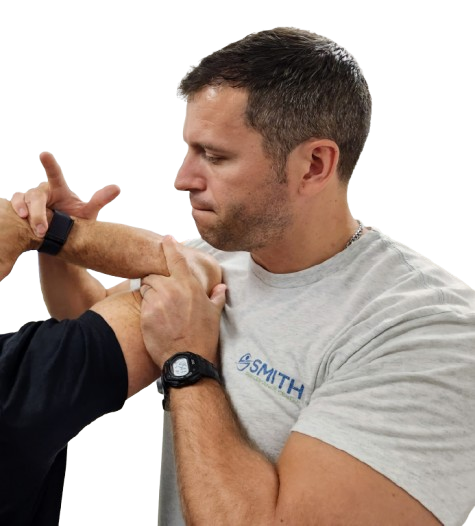Why should I go to Physical Therapy Solutions at Smith Performance Center for my shoulder injury instead of another clinic?
Physical therapy at Smith Performance Center is not a cookie cutter, one size fits all type of operation. Depending on what problem you have, the ‘right’ service might be different. Our process, called the SPC Difference, uses physical therapy in 3 distinct services:
PT Solutions – One on One Physical Therapy Sessions using SPC Methodology
PT Movement – Group Physical Therapy Sessions using Task Based Protocol for recurrent, chronic, or post surgical injuries
Health and Human Performance – Long term strength and movement programming your own coach including injury surveillance, early injury detection, and treatment integration
Physical Therapy Solutions 
The shoulder is the most mobile joint in the body, and is relied on heavily during daily activities. It has many different structures which can cause pain, and it can be a challenging area to treat.
The rotator cuff is often the first structure that comes to mind with shoulder pain. Rotator cuff tendinitis and impingement are the most common diagnoses with shoulder pain.
Patients are often told they have arthritis or joint damage as well.
Others are told they are unstable, and doomed to dislocate if they don’t have surgery.
Some are told they will need a series of injections for a nasty bursitis.
But how do you differentiate these if everything is painful? Worse yet, how do you treat the problem if you can’t differentiate between the different structures?
The pain could be due to the rotator cuff, the shoulder joint, the joint capsule and ligaments, the bursa, the labrum… the list goes on. We focus on teasing out the specific structure(s) which may be causing your shoulder pain. We test our hypothesis and verify that our treatments lead to less pain, so that we can confirm we have identified the problem. We test and track your response to confirm that we have the right plan for the problem. We continuously retest and refine the plan until you feel better.
PT solutions can be thought of as physical therapy consulting: we figure out your problem as quickly and as specifically as possible, develop a workable solution, and get in control of the symptoms.
When you understand this thought process, then you understand why we do the following:
One on one sessions without assistants: if there is not a clear strategy, why would we pass you off to an assistant?
Hour long sessions: We do not want to be rushed and make cognitive mistakes because of it.
Team Collaboration: We use our collective experience to review the majority of cases, especially in difficult cases that are not getting better.
In-depth home plans: We want you to own the problem and understand what is happening. The success hinges on the 167 hours you are not with us.
Trigger Management: We want a clear understanding of what is causing your symptoms.
Minimize Activity Reduction: We know many providers tell you stop doing the painful activity. We call this ‘fake improvement’ because nothing is really being fixed. We want to maintain as much of your normal activity as possible because injury and pain are the number one factors in becoming sedentary. If you can get better while maintaining your normal life, then we know we have the right solution.
Manual Therapy: We use hands on techniques to relieve pain and improve tissue quality. This can give us a window of time to implement the home plan.
3 level prognosis: We provide a range of visits using a best case, worst case, and expected scenarios so you understand the cost and your role in making the best case happen when possible.
Limited treatment sessions: We do not use your pain as a tool to extract as many visits as possible. We try to have one visit per week as this helps us test our hypotheses and get better results. If you are doing well and we have a treatment scheduled, then we cancel it or move it to the next week. We will never over treat when you do not need it.
Example of Shoulder Exericse
T Exercise
When is Smith Performance Center not the best place for you?
[/vc_column_text][vc_column_text]We are not for everyone and there are situations where we encourage individuals to use their insurance and use us as a resource.
Our physical therapy team views itself as a problem solving machine. For knee injuries, we specialize in injuries that seem to keep coming back or do not resolve when you go to other places. We like hard, complex problems without clear solutions along with easy, straight forward problems that we can quickly solve.
However, this requires a commitment to working on the problem with us. The best results occur with clients that follow the home plan and provide feedback on what is working and what is not working. If you have difficulty with following a plan, then that will be on of the biggest barriers to getting better. Other physical therapy clinics will schedule multiple sessions per week, and in the situation where you cannot do the home plan, this type of setup may be better suited for you.
We do not use modalities or the bike. We are not trying to get as many billable units as possible. When our session starts, the focus is on the highest value activities. We will spend the session trying to understand the problem, testing our hypothesis and building out the home plan you will be following. If you go to physical therapy for passive modalities beyond hands on manual therapy, then Smith Performance Center will not likely be the right place for you.
Common shoulder problems we treat
Physical therapy for shoulder pain
Rotator cuff tendinitis
These are typically caused by acute overuse of one or more of the rotator cuff muscles. The overuse usually comes from an activity overhead (increased demand on the cuff), a dynamic activity (like throwing), or a movement performed repetitively which exceeds the strength of the rotator cuff.
Rotator cuff tears (partial or full)
Rotator cuff tears can be the consequence of repeated tendinitis with failed healing. Full thickness tears can be the natural progression of partial tears, or caused by a trauma, oftentimes a fall or a strong distraction force.
Shoulder impingement
Impingement is when the rotator cuff tendons come into excessive contact with bones or ligaments around the joint. They can be pinched or dragged against surfaces which wear them down overtime. This is typically due to poor technique, muscle imbalances, or lack of coordination between muscles.
Bursitis
Bursitis can be caused by a trauma which jams the bursa against another structure, or by repeated movements which compress and rub against the bursa excessively. It can be one of the most painful conditions for the shoulder.
Frozen shoulder
Frozen shoulder occurs when an inflammatory process in the joint capsule causes the capsule to thicken and adhere to the head of the humerus, causing pain and a significant loss of motion. It may take two years to resolve, and has to be managed in three stages.
AC joint injuries
AC joint injuries are typically caused by a fall or blow directly to the shoulder. They often prevent full elevation of the arm.
Shoulder instability and/or dislocations
Some patients are naturally unstable due to being very flexible across all their joints. Others develop instability through trauma (macrotrauma or repeated microtrauma leading to subluxation/dislocation. Dislocating once increases the risk of future dislocations, and may damage the joint, and impair coordination. Instability which goes undetected causes recurring rotator cuff injuries, and long term damage to the joint.
Scapular movement impairments (scapular dyskinesis)
Many of the problems at the shoulder joint are due to problems with scapular position or movement. The scapula relies on many different muscles that attach to it to create a specific pattern of movement with elevation. Poor training habits, posture, pain, or problems with the thoracic spine often contribute to this.
Glenohumeral arthritis
Shoulder joint arthritis may be caused by direct damage to the joint, like with a fall on the shoulder or outstretched hand. It may be caused by repetitive use of the shoulder with poor rotator cuff strength. It may be the end result of instability or labral injuries, which cause abnormal movements at the joint and wear down the cartilage.
Labral tears
Labral injuries are often caused with repetitive activities that place a high demand on the shoulder, such as throwing, rowing, or swimming. They can also be caused by a traumatic event. The biceps is frequently affected as well.
How do we get you back to a life without shoulder pain?
Step 1: Understand the problem from your perspective
Step 2: Build a diagnosis from your medical history, subjective, objective (physical exam)
You can learn about this process in the article, Diagnosis in Physical Therapy.
Step 3: Test the diagnosis using your subjective and objective key sign
Step 4. Retest in the same session until an effective treatment is found
Step 5: Develop home plan including recovery positions, exercises and activity, and trigger management strategies
It is easy to forget about triggers, but they can be the difference between success and failure.
Trigger Management in Physical Therapy
Step 6: Create 3 Level Prognosis
We believe it is critical to understand the uncertainty in medicine and physical therapy. We can use this uncertainty to build a better plan using the 3 Level Prognosis.
Step 7: At follow up sessions, refine the diagnosis and the home plan
This may include braces, taping, and training aids or specific exercises.

